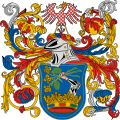Csömend | |
|---|---|
Village | |
 Location of Somogy county in Hungary | |
| Coordinates: 46°34′17″N17°29′20″E / 46.57135°N 17.48885°E | |
| Country | |
| Region | Southern Transdanubia |
| County | Somogy |
| District | Marcali |
| RC Diocese | Kaposvár |
| Area | |
• Total | 8.66 km2 (3.34 sq mi) |
| Population (2017) | |
• Total | 298 [1] |
| Demonym | csömendi |
| Time zone | UTC+1 (CET) |
| • Summer (DST) | UTC+2 (CEST) |
| Postal code | 8700 |
| Area code | (+36) 85 |
| NUTS 3 code | HU232 |
| MP | József Attila Móring (KDNP) |
| Website | Csömend Online |



